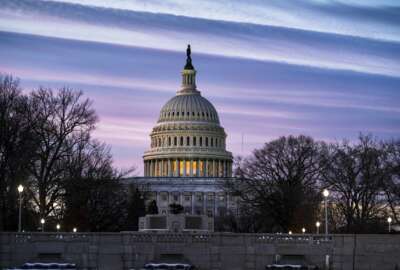HHS, Justice turning up heat on fraudsters
New rule published today details how the government will go from chasing criminals to using data and other tools to stop them as Medicare and Medicaid fraud is...
By Jason Miller
Executive Editor
Federal News Radio
A new report by the departments of Health and Human Services and the Justice show steps to reduce fraud in federally-sponsored medical insurance programs are returning more money than ever. And HHS Secretary Kathleen Sebelius said the government is about to get even tougher.
A new rule issued in today’s Federal Register details steps to identify and combat fraud in a more proactive way. The final rule, which is open for comment for 60 days, implements provisions in the Affordable Health Care Act signed in to law last year.
The annual report to Congress shows the government recovered $4 billion in health care fraud judgments last year–a record high, up 50 percent from 2009-and returned $2.5 billion to the Medicare trust fund. DoJ also opened more than 2,000 criminal and civil healthcare fraud investigations, charged 930 defendants and convicted more than 700 defendants-all three were the highest ever.
“All told since 1997, DoJ and HHS have returned $18 billion to Medicare trust fund and the return on investment since 1997 is nearly $5 for every $1 expended and since 2008 that return on investment has been $6.8 for every $1 expended,” said Thomas Perrelli, DoJ’s associate attorney general.
Donald Berwick, the administrator of the Centers for Medicare and Medicaid Services, said the rule will help CMS, the FBI and others move from pay and chasing fraudsters to identifying and stopping them before it happens.
“New authorities put in place from this rule allows us to suspend payments to providers and suppliers based on credible allegations of fraud in Medicare and Medicaid,” Berwick said during a press conference Monday releasing the annual report to Congress and announcing the final rule. “It allows us when necessary, and with the Secretary’s guidance, to temporarily place a moratorium on Medicare and Medicaid and CHIP enrollment by high-risk providers and suppliers to help prevent or fight fraud, waste or abuse.”
The final rule also HHS and Justice to target provider enrollment and screening procedures to better ensure fraudulent health care providers and suppliers are allowed to enroll in and bill Medicare and Medicaid and Children’s Health Insurance Program (CHIP).
Finally, HHS and Justice can require states agencies to terminate providers for CHIP operations when terminated by Medicare and Medicaid for cause, and vice-versa if a state agency kicks a provider out for cause, Berwick said.
HHS, its inspector general and DoJ defined in the rule what credible allegations means when it comes to suspending payments.
Peter Budetti, CMS’s deputy administrator, said the agencies used a variety of information to develop the criteria.
“It was based upon a series of experiences law enforcement had. It was based upon analysis of our own information inside of CMS,” Budetti said. “And it was based upon a series of reports from our own IG and Government Accountability Office. The level of risk is assigned by category and not by individual. But then later one, individuals can be moved if certain kinds of developments occur with respect to them.”
Along with the new rule, HHS and Justice plan on becoming more aggressive this year.
The two agencies created a Strike Force in 2009 to focus on specific parts of the country where fraud and abuse were the worst. In 2010, HHS and Justice expanded to seven from two the number of these task forces, including in areas such as Brooklyn, N.Y., Baton Rouge and Tampa, Fla.
“All areas where the data told us there may be hot spots for high billing activities and potential fraud,” Perrelli said.
For 2011, Gerry Roy, the deputy IG for Investigations at HHS, said they are increasing the number of agents and focusing on areas of the country that need the most help. Roy said HHS also is going after corporate fraud more aggressively. He pointed to the Pfizer case in 2009 as an example where Justice prosecuted the drug company under the False Claims Act for illegally promoting drugs for uses not medically accepted, and therefore not covered, in the federal medical insurance programs. Pfizer paid $1 billion to resolve the allegations, including $668 million to federal government and the rest to state Medicaid programs.
Sebelius said new technology will help authorities view Medicare claims data closer to real time and flag suspicious patterns. More comprehensive background checks, including possibly fingerprinting providers, may also follow.
All these steps are part of how CMS is reducing improper payments across Medicare and Medicaid. Overall Medicare and Medicaid programs paid out $71 billion in 2010 improperly, according to OMB statistics.
(Copyright 2011 by FederalNewsRadio.com. All Rights Reserved.)
Copyright © 2025 Federal News Network. All rights reserved. This website is not intended for users located within the European Economic Area.





